When it comes to P1, P2 and P3, The difference between peak, standard and off-peak hours have to do with the hours of the day when there is greater or lesser consumption and the cost of producing the energy during each of those hours.
As of June 1, 2021, and affecting all electricity consumers, there will be a toll with hourly discrimination in terms of power and energy. This means the price will be different depending on the consumption schedule (peak/valley/flat).
As a consequence, the price difference between peak and valley periods increases, both for power and energy.
Prices fluctuate every hour of the day, as a consequence, during all 3 time periods. Everyone can follow the OMIE prices during the current global situation, this is why we have been encouraging our customers to do so.
On the OMIE and ESIOS pages, there is an average daily price, but also a maximum and a minimum. The screenshot below is for the 11th of March 2022 – Which means the price could fluctuate over the day between the maximum and the minimum price.
Currently, with global situations as they are, there is a rather large difference between the maximum and minimum price for each hour of the day.
This means it is important to check the prices and your own consumption profile for maximum control over the pricing of your bill.
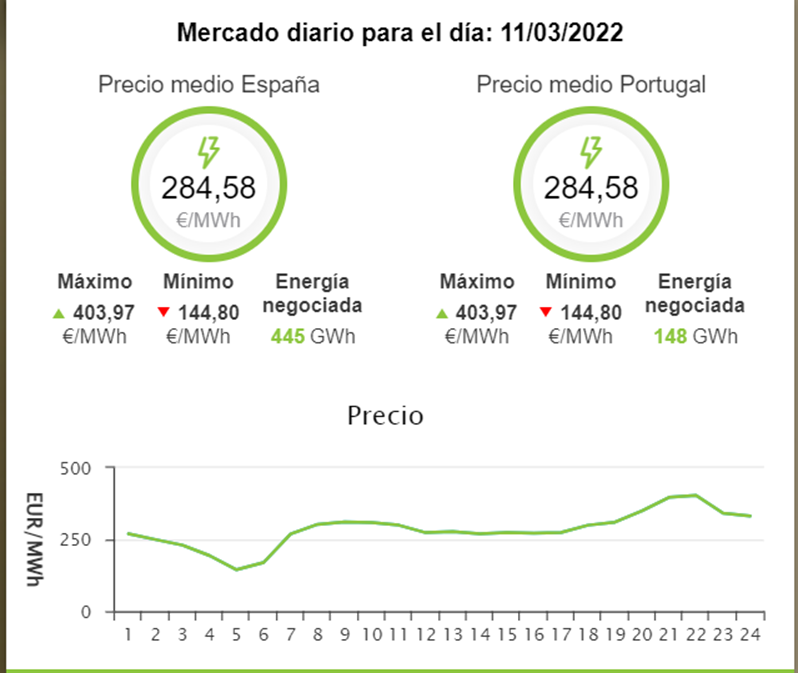
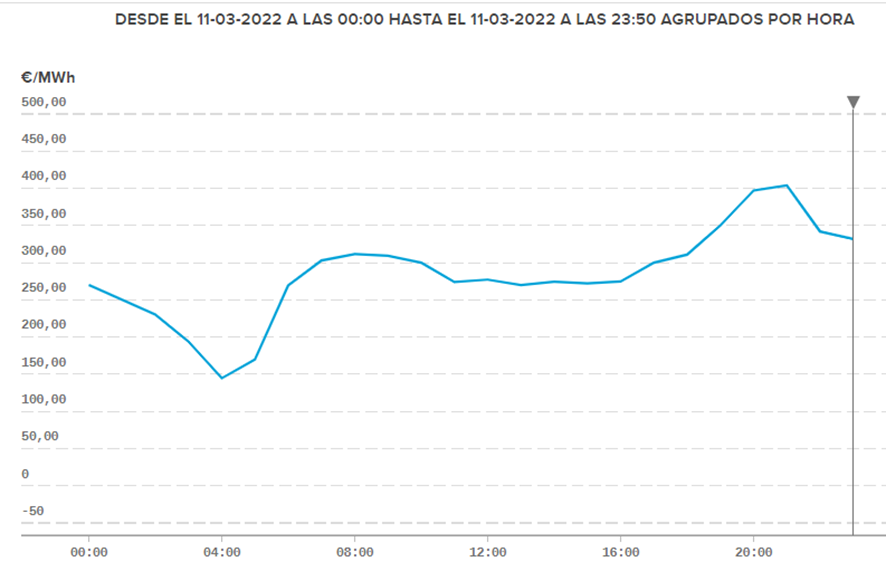
As an example below – Monday to Friday from 6 pm – 10 pm is a P1 window – but P1 still has fluctuations in its price. So for example, below at 18:00 on March 11th, the price of P1 is 310,80€ / MWh.
And on the second image below at 21:00 of the same day in the same P1 window, the price is at 403,97€ / MWh.
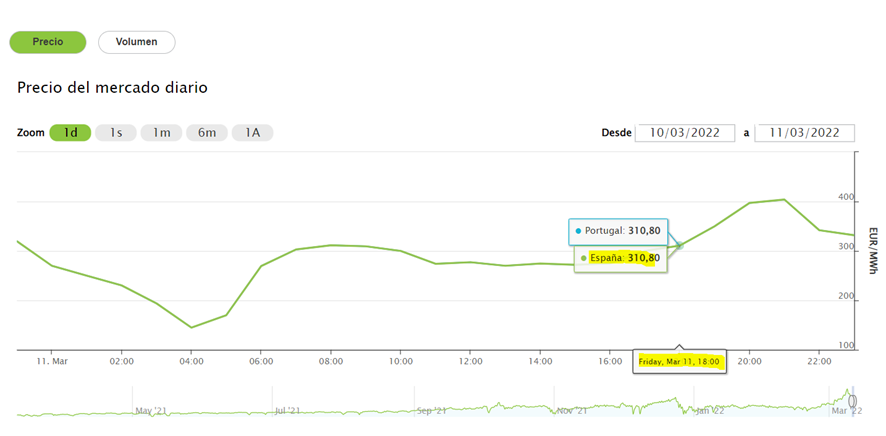
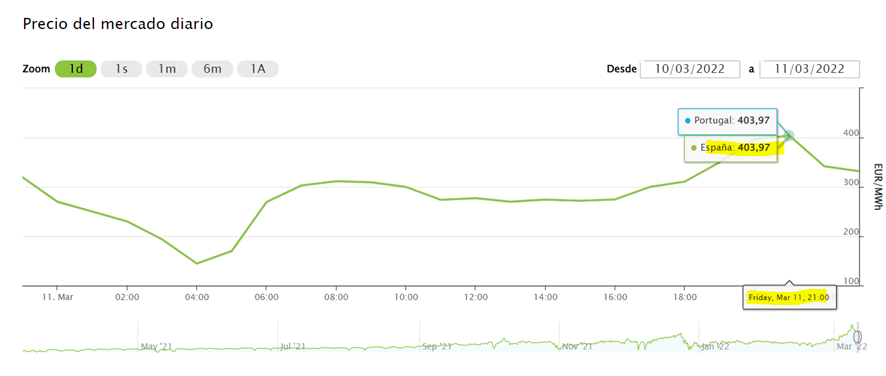
With prices fluctuating as much as they are currently, there are still going to be cheaper windows within each P1, P2 and P3 time period. When the average price for P3 was slightly higher than P2, the price of each period is worked out as an average of all energy consumption for each time period (P1, P2, P3) – the fact that the P3 happened to be a little higher means the hours when the energy was consumed during P3 have been the most expensive P3 hours and the hours in P2 when the energy was consumed ended up being the cheapest P2 hours.
So when the bill is worked out with the formulas above, although toll price will always be cheaper in P3 than in P2, the average of the consumption hours in P3 were at a higher rate than in P2.
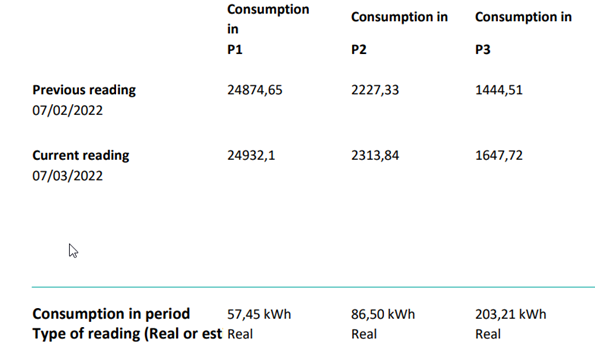
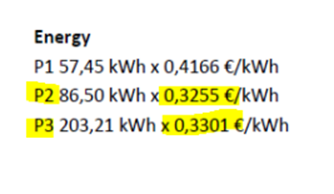
If your distributor is E-Distribucion, in the link below you can register to see the complete curves of consumption usage for every hour of the day, live and historically. This will really help understand the curves of consumption at each hour of the day:
https://support.energynordic.com/knowledge/how-to-register-with-e-distribucion
In the image below - PUNTA is P1, LLANO is P2 and VALLE is P3.
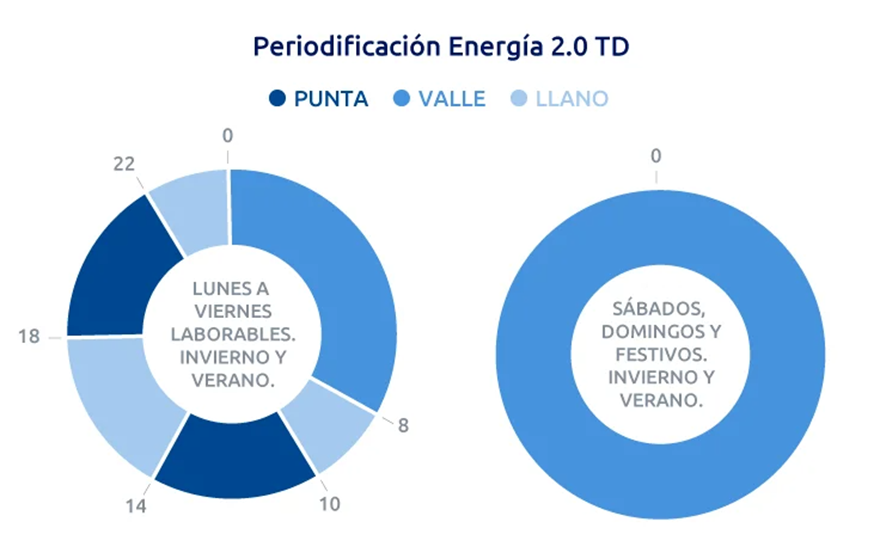
Here is an image of 5th – 6th March 2022 – weekends are always P3 as we know, but the price still fluctuates even though it is all in a P3 time window. The price for P3 is not one set price.
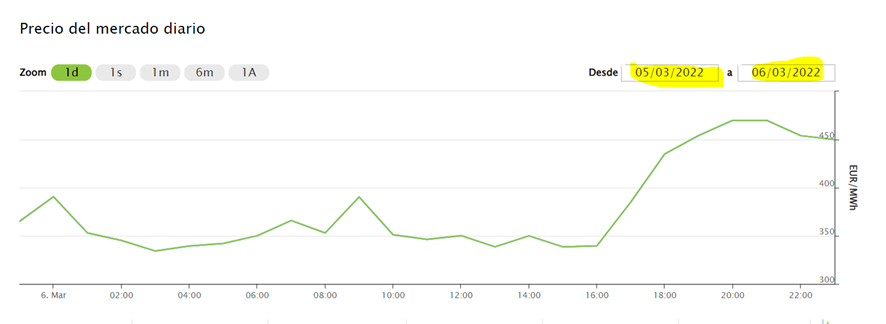
It is never one set-price for any window, none of our clients have the same price as another in any time window, as every single consumer has different energy consumption at different hours of the day and the price for P1, P2 and P3 will be different depending on the hours within each time window where you have had higher consumption.
To ensure the cheapest possible bills, we recommend always checking with OMIE – as mentioned above, every day of the year at 12:00 CET is the day-ahead market session where prices and electrical energies are set for all across Europe for the twenty-four hours of the next day. The price and volume of energy at a specific hour are established by where supply and demand intersect, following the model agreed upon and approved by all of the European markets that is currently applied in Spain, Portugal, Germany, Austria, Belgium, Bulgaria, Croatia, Slovakia, Slovenia, Estonia, France, Holland, Hungary, Ireland, Italy, Latvia, Lithuania, Luxembourg, Finland, Sweden, Denmark, Norway, Poland, the United Kingdom, the Czech Republic, and Romania.
That everyone you can see each day 24 hours ahead at which times during each period is the cheapest possible time to use to have maximum control of the energy bill.
Here is a link to the CNMC should you wish to read further:
https://www.cnmc.es/la-nueva-factura-de-la-luz#normativa
